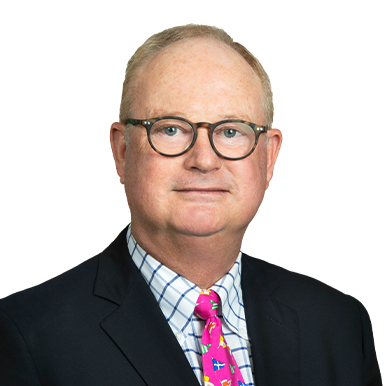Q1: HOW WOULD YOU CHARACTERISE THE HEALTH OF THE ILS SECTOR?
Arthur Wightman: 2023, particularly in the primary markets, started in a very positive fashion. The new issuance market in particular was very strong. And when you look at the absolute number of deals, notional amounts, issuances were close to $10 billion in the first half of 2023 and is tracking to be over $14 billion for 2023 as a whole.
Bermuda is a magnet for insurance-linked securities (ILS) and it participated significantly. The secondary market started the year in a different way. Spreads were tightening. And some of the bonds’ valuations were being challenged, particularly coming off the back of Hurricane Ian. As the broader reinsurance markets saw dislocation through the course of the year, ILS caught some of those tailwinds. It has been a strong year for ILS. ILS is bigger than cat bonds and the use of sidecars in Bermuda has also been very strong.
Brad Adderley: The market this year has been phenomenal for ILS. ILS started in different domiciles around the world and then Bermuda took the business from other jurisdictions and grew the market. We then saw a bit of a dip but cat bonds have grown steadily for several years and this year they’ve gone off the chart.
We have also seen a lot more sidecars recently. Bermuda has had a great year, sometimes at the expense of other jurisdictions. I have a feeling that private cat bonds might be down a bit, but the total market is exponentially bigger.
Scott Cobon: As reported, there has been $12 billion year to date in cat bond issuance, and there’s a lot of activity happening at the moment. We hear from the specific deal teams that they’re cautioning issuers that there won’t be the capacity so they are looking for the right price. They’re tempering as we roll into 2024.
I agree we are seeing more sidecars. Sidecars have been tremendously active, especially the last six months. Everyone seems to want one—lots of registrations are happening. There will be a lot of activity as we head into 2024 in that market.
Collateral insurance, the very private and unspoken part of ILS, is worth a mention as we are steadily seeing more actively in this space. We are seeing some green shoots after a tough 48 months or even longer.
Whether issuers can get the capacity they’re looking for, is probably a bit of a question mark, but from a registration perspective, there’s certainly a lot of activity.
Finally, we’re seeing a lot of trapped collateral being released and/or commuted, so the opportunity cost to redeploy that into 2024 is very strong. We’re seeing new money, an increase over prior years in terms of inflows of fresh capacity.
Andre Perez: We started the year with a big appetite for cat bonds but people gradually realised the ILS market is a lot more than just cat bonds. I’ve always been a bit reticent comparing cat bonds to collateralised reinsurance, because to me it’s like comparing apples to oranges. They’re on two different levels of the risk curve.
There’s no doubt that on the collateralised side, investors have taken a bit of a beating in the last couple of years and have gone a bit shy on having to double or triple down. Cat bonds have run relatively clean, which is attractive for investors, even though the returns are not as high as they would be on the collateralised side had the latter run clean.
But, yes, there has been a big increase on the cat bond side, partly fuelled by the capacity that’s available. Because we have had a benign year for 2023, all of a sudden, the pendulum is starting to swing again where we’re starting to see more collateralised re. We’re certainly seeing more sidecars, which is nice. A sidecar is always a very good way for an investor to participate into a specific market condition without having to set up their own reinsurance company.
It’s a healthy market, there’s no doubt about it. Bermuda is still the primary jurisdiction for ILS. Overall we’re still hovering over the $100 billion mark in active deals. I hope we’ll get a little over it, but it’s an asset class a lot of people now know about.
Adam Champion: From the capital advisory side, it’s a little less operational as I get involved when the deals are being considered. They either need legal, financial, or structuring advice. I’m often involved in the early stage, where you’re talking with both carriers and investors, trying to match their respective appetites
Everything said about cat bonds is accurate and not surprising given where the market is. It’s a very natural response off the back of a difficult six-year environment in the property-cat space.
The more interesting area around cat bonds is the transition away from pure property-cat. We’re seeing more and more non-property-cat cat bonds in the market being discussed. A lot more conversations are happening around collateralising other risks and the investor interest and appetite is there.
It’s partly driven by analytics, getting comfortable with the modelling and pricing of the exposures and then getting a broad consensus within the market. We’re clearly seeing a bit on the cyber side, and I think we’re going to continue to see more expansion.
There’s also renewed interest in managing sidecars because of growing investor appetite, and even more interesting is the convergence of sidecars and collateralised re.
We are finding that investors want sidecar-type alignment, but the structure of a fund. Sidecars are often difficult to manage for investors because they are treated like a reinsurance transaction as opposed to a financial investment. Investors want total alignment, with no adverse selection, but in a fund structure.
In the future I think we’ll see more co-mingled funds with sidecar dynamics. Investors don’t want to take risk that the carrier is not, or take a disproportionate amount of any particular risk. One question we hear a lot is “what is their overall risk retention?”.
Q2: HOW WOULD YOU CHARACTERISE THE SENTIMENTS OF INVESTORS AND ISSUERS?
Arthur Wightman: There’s no shortage of interest on both sides. Investor appetite is there but the challenge is deploying that appetite into the right structures or opportunities. Perhaps it has frustrated some investors because they haven’t been able to deploy as fast as they would like.
That also comes back to the speed of innovation within ILS. In reinsurance, that’s a 400-year-old market, the speed of innovation is very slow. I’d say the speed of innovation in ILS is better, but it’s probably not keeping pace with investor demand.
I do think however that the markets are growing in complementary ways. A decade ago ILS was referred to as an alternative to traditional reinsurance. I think it’s much more complementary and the market has worked that way a lot more in the last year in particular.
Scott Cobon: New structures, different perils and different regions are coming into the ILS universe. Cyber ILS is one; there have been a number of public issuances and a couple of private ones, and a whole host of collateralised reinsurance. That’s certainly an area for investors to get comfortable in different perils. It bodes for a good sentiment for the investor community and ILS as an asset class. We can continue to educate and build on what we’ve seen occur in 2023 in terms of profitability.
Brad Adderley: If you think about innovation, the advent of cyber has been great—because we’ve all talked about it for years. This year, we’re doing it instead of talking about it. There have been maybe six cyber deals, if not more, and one or two maybe that haven’t succeeded, but that’s a pretty good steep curve of new deals.
There will be more new structures coming in the new year, from what I have on my plate. The structures are going to be bigger, so I’m very positive for once on new perils.
We are at the $100 billion mark now, but most of the investment banks talk about the first couple of months of 2024 being equally as busy. I don’t know how many deals are coming off but I wouldn’t be surprised if we continue with these record numbers.
Andre Perez: I’m all for record numbers. I haven’t cracked yet what motivates an investor to invest in ILS. We’ve seen some excellent ILS managers having real difficulty raising funds and average ILS managers with the ability to raise a lot of funds, and everything in between. We are definitely seeing more investors than, let’s say, a year ago. That capacity is coming from somewhere.
Cyber is a welcome development depending on the uncertainty around the risk. There are a lot more variables on cyber, but there are technologies allowing a much more structured approach to cyber cat bonds.
I am pleased because I thought it would never happen. The fact that we’re putting more structure around it and making it more appealing to investors is definitely a good development. We’re also seeing developments on the weather derivative side, which is very interesting.
I would add last but not least: we’re going to see more managing general agents (MGAs) starting to access the ILS market directly. That to me is an exciting development because the MGA market is massive so if we have the ability to give them access to ILS on the catastrophe side, that’s also an interesting development.
There are still problems to solve. The whole trapped collateral issue could be something that run-off companies take on. There’ll be some sort of fund specialised in just buying distressed assets. I’m hoping that happens. The other solution would be to charge a premium for the trapped collateral.
Q3: WHY DOES BERMUDA REMAIN SO ATTRACTIVE TO ILS? COULD THAT BE THREATENED BY OTHER JURISDICTIONS?
Arthur Wightman: It’s important to reflect on the fact that we haven’t always had the leading position. Our leading position has been well-earned and fought for over a long period of time. The beauty of the Bermuda marketplace is it has various facets that in combination make it very strong and attractive for sponsors and cedants.
We have a true reinsurance marketplace comprising people and infrastructure on the Island that do business in situ. We have an efficient and effective way to have capital deployed at speed, and we have a track record of attracting sophisticated capital to the jurisdiction, which again does not happen overnight. It’s something that is built up over time and it hinges around having a high-quality regulatory environment where you have track record.
I might have suggested that innovation was slow in ILS—it’s faster than in traditional re. And there is actually on the flipside of that coin: Bermuda does have a reputation for being innovative.
What I was really referencing was whether the innovation was keeping pace with the desire to deploy capital. But innovation is a particular strength of the Island, so when you put together the true reinsurance marketplace, the sophistication of capital, the regulatory environment, the quality and the innovation, those are elements that are hard to replicate in other jurisdictions.
I suppose when you think about Bermuda, you also think about London, Zurich, and possibly Singapore. We have to exist within a global ecosystem. It’s not just beating our fists on our chest and saying we are competing against everyone. There’s a lot of value in working with other jurisdictions as opposed to always butting up against them.
Bermuda can definitely compete and compare itself well with other sophisticated jurisdictions around the world.
Andre Perez: The truth is we should never take our position for granted. We’ve seen it in the past where Cayman used to have 100 percent of the ILS market. Granted it was all cat bonds, but how we were able to switch this to Bermuda is pretty amazing.
I know we’ve talked only about reinsurance—the part we haven’t mentioned is on the fund side. A lot of ILS funds used to be domiciled in Cayman. Several of them now, certainly the new ones, are back in favour in Bermuda and choose to domicile in Bermuda.
A very important development is we’re seeing more ILS managers having a physical presence in Bermuda, even though they may have a split presence in another jurisdiction. That further solidifies our credibility.
I don’t see the other jurisdictions necessarily as a threat. I see them as complementary and they each have a role to play. Cayman still has a role to play, and if anything, it keeps Bermuda honest in terms of keeping the regulator on its toes, because we do have an alternative.
Singapore has changed. They’ve renewed the subsidy programme but the condition is that you have to have some Asian exposure within the cat bond. So those Florida cat bonds that were done in Singapore cannot happen now. But how many cat bonds do we have with Asian exposure?
We don’t have that many, so it’s not so much a threat, it’s more complementary, which is exciting. The only one from a jurisdiction perspective that could compare to Bermuda would be the UK.
Again, I see it as an exciting development because it has a lot of the elements that Bermuda has. The one element it probably doesn’t have is a regulator that’s as responsive and as flexible. But once we’ve passed that hurdle—and I hope we can help the UK regulator get over that—there’s no reason why London couldn’t be another successful ILS jurisdiction.
Some Europeans, rightly or wrongly, refuse to deal with Bermuda or Cayman, and I know a lot of the Asian market love having to deal with London. So if there’s a way we can expand that market and allow other jurisdictions to catch business that Bermuda wouldn’t see in the first place, that’s an awesome development.
Brad Adderley: I’m always concerned that once someone uses a different jurisdiction, people wonder: “maybe I should follow them?”. It’s interesting that competitors have come and gone. Cayman was very popular; so was Ireland but it never took off. Singapore has fallen off because they stopped paying people to use them, and those same people have come back to Bermuda.
The problem with the UK for me is the connection to Lloyd’s and London. Will they get access to other markets if they do it there? I wonder if they’ll ever get the speed correct, if they’ll ever be fast enough to go to market with the UK Prudential Regulation Authority (PRA). I don’t think they will be, but they do have the attraction of Lloyd’s. It does concern me—if they do 10 cat bonds, everyone’s going to be saying: “why not London?”.
But at the same time, we have the investors, the sponsors and the deals in Bermuda. Every year we do more deals and every year the deals are bigger and more complex. I feel good about it, but the UK concerns me most.
Scott Cobon: It’s about growing the pie. London has a unique position, and I agree that the PRA will never get to a point where speed to market execution is like Bermuda’s. So Bermuda will always have its position. Overall for the ILS industry, having initiatives in places such as London or Cayman is good for the market as a whole. We’ve seen quite an uptick in activity in Cayman, whether it’s ILS backing MGAs or collateralised reinsurance.
There’s been quite a bit of activity, but I don’t think that takes away from the uniqueness of Bermuda around having a mature traditional market, and a mature regulator that can deal with issues swiftly and easily. It’s about growing the pie and sitting here in Bermuda I don’t feel threatened at all by any of these initiatives.
Adam Champion: The more interesting thing for me is London Bridge, the Lloyd’s ILS platform, because of the benefits you get from being a syndicate. The leverage and the licences—they are unmatched anywhere in the world.
Third party capital wants to access that, and it’s been relatively constricted in the past by bureaucracy and speed to market, which has historically made Bermuda more attractive. If Lloyd’s were to truly revolutionise the way it takes in third party capital, it would put pressure on Bermuda
I also tend to agree that generally, domiciles are complementary, rather than direct threats. However, given that many reinsurance companies operate in both jurisdictions, there is industry-wide transparency across both markets and they are naturally always weighing the pros and cons of where they maintain their capital.
First Published In Bermuda Finance 2023/24, Bermuda:Re+ILS, January 2024



















